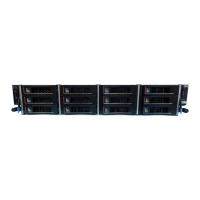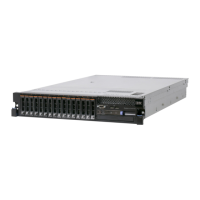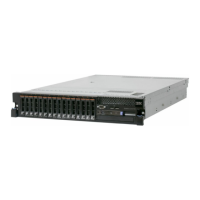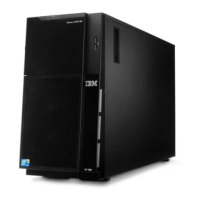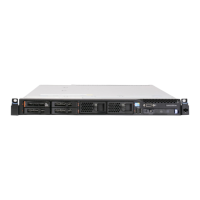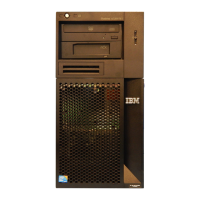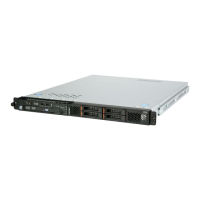SAS signal cable
SAS connector
SAS connector
Hot-swap backplane
power cable
15. Connect the LED signal cable to the connector which is located above the
power supply of the hot-swap backplane.
16. Connect the power cable which you can find near the 240 VA cover into the
backplane assembly on the rear hard disk drive cage (see “Internal cable
routing and connectors” on page 136); then, secure the cables with any
retention clips.
17. Make sure the cables are routed in the proper locations without blocking the
airflow. Suggest to press all the cables downwards to make the cable routing
easier.
Removing the fan from the optional rear hard disk drive cage
To remove the hot-swap backplane from the optional rear hard disk drive cage,
complete the following steps:
1. Read the safety information that begins on page vii and “Installation guidelines”
on page 133.
2. Turn off the server and peripheral devices, and disconnect the power cord and
all external cables.
3. Remove the cover (see “Removing the cover” on page 145).
4. Unplug the fan cable on the fan board.
5. Carefully grasp the fan and carefully pull it off the fan bracket. Make sure that
the fan cable is not tangled with the fan bracket.
Chapter 5. Removing and replacing server components 219

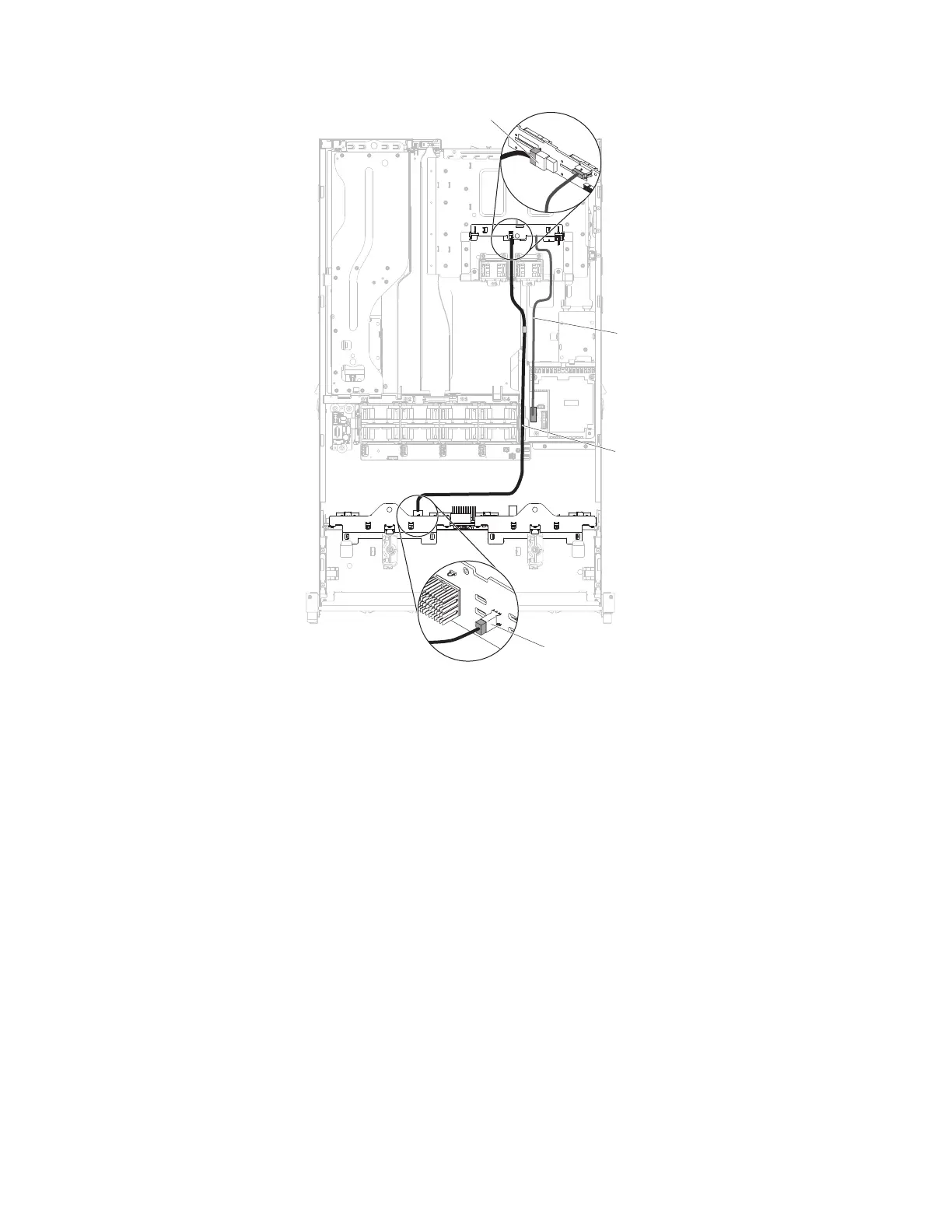